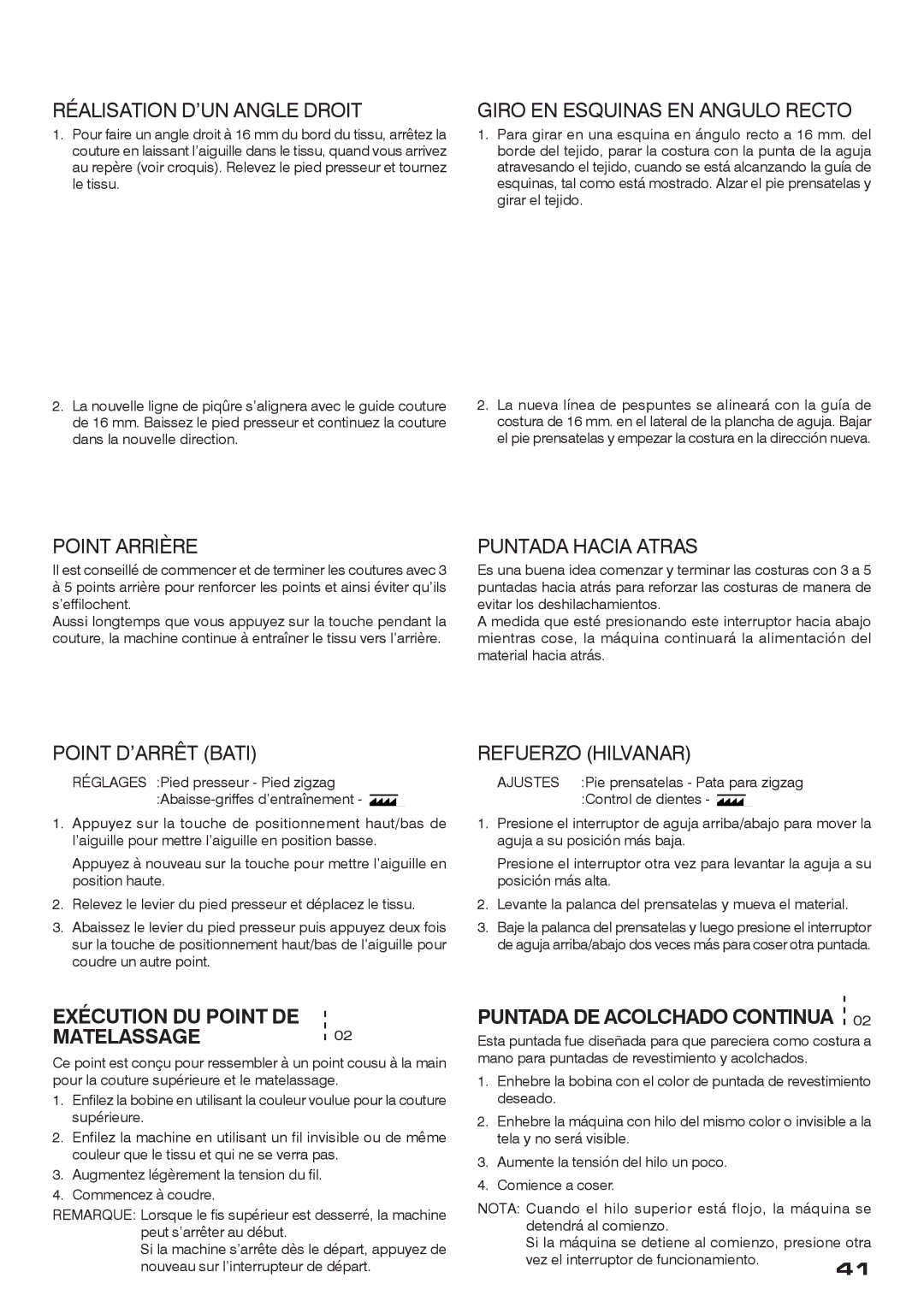CE-200 specifications
The Singer CE-200 is a versatile and feature-rich sewing machine designed to cater to the needs of both beginners and experienced sewists. Renowned for its user-friendly interface and impressive capabilities, the CE-200 empowers crafters to explore their creativity in a wide array of sewing projects.One of the standout features of the Singer CE-200 is its computerized functionality. It boasts a digital display that simplifies the process of selecting stitches and adjusting settings. With a variety of built-in stitches, including utility, decorative, and stretch stitches, users can quickly choose the perfect option for their project. The machine also includes an auto-tension system that ensures consistent stitch quality regardless of the fabric type.
The CE-200 is equipped with a robust feeding system, which enhances fabric handling, making it an excellent choice for sewing multiple layers or working with tricky materials like knits or denim. Its powerful motor provides the strength needed for heavy-duty projects, allowing users to tackle everything from simple hems to complex garment construction with ease.
Another remarkable technology integrated into the Singer CE-200 is the automatic needle threader. This feature significantly reduces the frustration often associated with threading the needle, enabling users to easily start their sewing projects. Additionally, the drop-in bobbin system simplifies bobbin loading, ensuring a hassle-free experience and minimizing thread jams.
The machine also offers a range of adjustable features, such as stitch length and width, which allow sewists to customize their stitches for different applications. This adaptability ensures that creative ideas can come to life without being limited by the equipment.
Moreover, the Singer CE-200 includes a variety of presser feet for different sewing techniques, such as zipper insertion, buttonholes, and more. The inclusion of these accessories expands the machine's versatility, enabling users to accomplish various sewing tasks efficiently.
With its compact design and portability, the Singer CE-200 is an excellent option for those with limited sewing space. It combines functionality, ease of use, and advanced technology, making it an ideal choice for anyone looking to embark on their sewing journey or enhance their existing skills. Whether for home décor, fashion creations, or quilting, the Singer CE-200 stands out as a reliable and efficient sewing companion.
